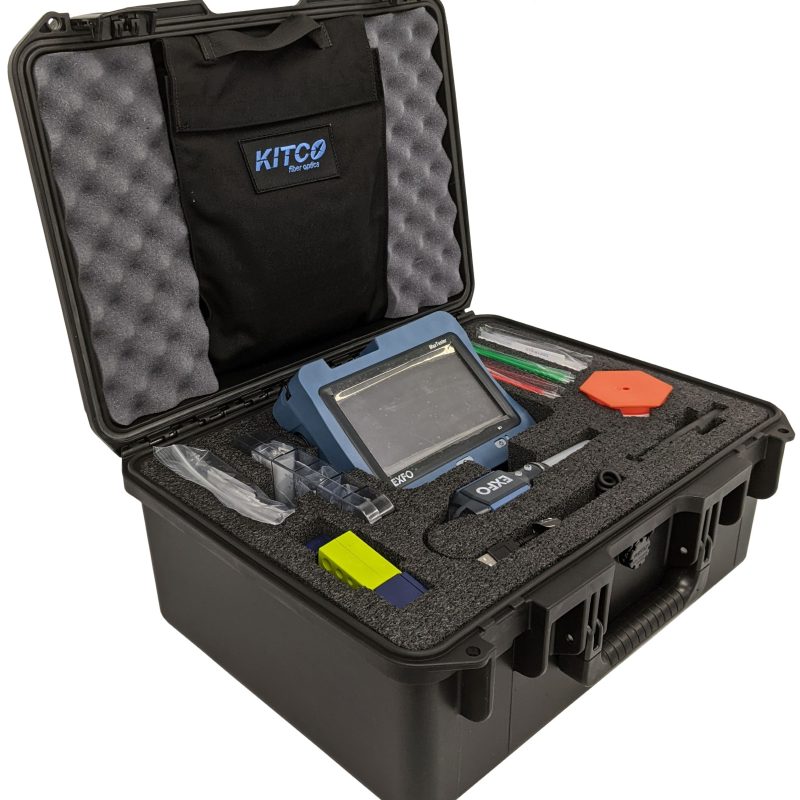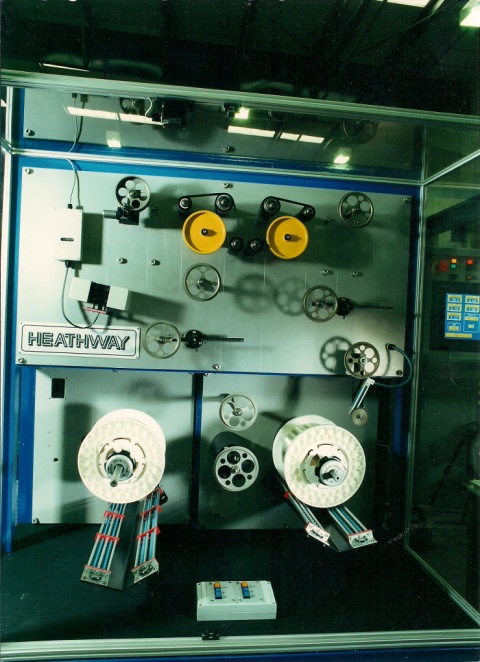Exploring the Effect of Robotic Vision on Modern Production Techniques and Quality Assurance
Robotic vision innovation is transforming the landscape of modern manufacturing and top quality control. By incorporating innovative imaging systems and expert system, manufacturers can achieve unprecedented levels of accuracy and effectiveness. This shift not only optimizes production processes but likewise addresses essential obstacles in preserving item requirements. As sectors progressively count on these developments, the implications for future manufacturing practices stay to be completely checked out. What will this mean for the competitive dynamics of the market?
Recognizing Robotic Vision Technology
Robotic vision innovation offers as the foundation of automation in modern production. It includes using video cameras, sensing units, and expert system to enable robots to analyze and react to aesthetic details from their environment. This technology permits robotics to determine, find, and review objects, making them efficient in performing complicated jobs such as setting up, inspection, and product handling with precision. The assimilation of maker learning algorithms even more improves the capacity of robot vision systems, permitting them to adjust to differing problems and improve in time. By refining images and data in real-time, robot vision systems can help with quicker decision-making and reduce errors in producing processes (fibre testing equipment). This modern technology not just enhances functional performance yet additionally ensures that high quality standards are fulfilled consistently. As the production landscape remains to develop, understanding the details of robotic vision modern technology ends up being essential for leveraging its possible completely
Benefits of Robotic Vision in Production
Robotic vision innovation provides significant benefits in production by enhancing accuracy and accuracy in tasks such as high quality control and assembly. This increased degree of detail assurances that products fulfill rigid requirements, reducing waste and rework. Additionally, the integration of robot vision can result in boosted production efficiency, enabling producers to enhance their processes and attain greater outcome rates.
Enhanced Precision and Accuracy
In modern-day manufacturing, boosted precision and accuracy are vital for optimizing manufacturing processes and ensuring item quality. Robotic vision systems allow makers to carry out intricate tasks with amazing uniformity. These systems make use of sophisticated imaging innovations to detect minute details and variations in materials, elements, and ended up products. By examining aesthetic information in real-time, robotic vision significantly reduces human error, leading to fewer problems and greater quality criteria. Additionally, enhanced accuracy in dimensions and positioning facilitates much better placement in assembly processes, which is crucial for elaborate styles. Eventually, the combination of robot vision not only strengthens the integrity of manufacturing outputs but likewise fosters confidence among consumers regarding item honesty and performance. This precision is crucial in sectors where top quality is critical.
Raised Manufacturing Effectiveness

Makers are increasingly transforming to vision systems to increase manufacturing performance across various procedures. These advanced systems allow real-time examination and monitoring, considerably minimizing downtime brought on by mistakes or flaws. By incorporating robot vision, business can automate high quality control, permitting for faster recognition of problems and reducing the need for human intervention. This leads to structured workflows, as robots can promptly adjust to changes in manufacturing needs without compromising precision. Additionally, vision systems facilitate far better inventory monitoring by precisely tracking elements and products, guaranteeing optimal resource application. Ultimately, the adoption of robot vision not just boosts efficiency but additionally adds to higher outcome rates, lowered operational costs, and enhanced overall efficiency in the production field.
Enhancing Quality Control Processes
Robotic vision modern technology substantially boosts top quality control processes in production by using accuracy examination strategies. These sophisticated systems promote real-time flaw detection, making sure that products satisfy stringent top quality standards. As a result, suppliers can minimize waste and improve total efficiency.
Precision Inspection Techniques
Precision evaluation methods have actually reinvented quality more assurance processes in manufacturing, enabling the discovery of minute flaws that standard approaches could ignore. These strategies leverage advanced imaging technologies, such as high-resolution cameras and laser scanning, to achieve unequaled accuracy. By using robot vision systems, manufacturers can automate assessment jobs, making sure consistent efficiency and reducing human mistake. The integration of artificial intelligence formulas in addition improves these systems, allowing them to adapt and improve with time. In addition, accuracy assessment helps with the identification of subtle variants in item measurements and surface coatings, which can considerably impact overall item quality. Therefore, manufacturers can apply corrective activities extra swiftly, inevitably causing reduced waste and improved consumer fulfillment.
Real-Time Flaw Detection
Taking advantage of advanced imaging innovations, real-time issue discovery changes quality assurance processes in manufacturing. By integrating high-resolution video cameras and innovative formulas, producers can promptly determine abnormalities during production. This innovation facilitates immediate restorative actions, lowering waste and improving total performance. Real-time systems evaluate products as they relocate along the assembly line, guaranteeing that issues are spotted and resolved right away production schedules. In addition, the application of machine discovering improves the accuracy of these systems, allowing them to adapt to new issue patterns in time. As a result, suppliers gain from improved item quality and minimized functional costs. Eventually, real-time defect detection not only improves processes but likewise promotes a culture of continuous improvement in contemporary production atmospheres.
Real-Time Information Analysis and Choice Making
In the vibrant landscape of production, real-time information evaluation encourages systems to make swift, informed choices. By leveraging advanced robotic vision technologies, makers can collect and refine huge quantities of information immediately. These systems assess aesthetic inputs to monitor production processes, guaranteeing that any discrepancies from top quality criteria are found and attended to promptly. Suppliers can optimize procedures by reallocating resources and adjusting workflows based on real-time understandings.
In addition, the integration of data analytics permits for predictive upkeep, where possible devices failings are expected before they interrupt production. This proactive method decreases downtime and enhances total efficiency. robotic vision. The ability to make data-driven decisions in real time considerably reduces waste and improves product top quality, allowing manufacturers to reply to market needs promptly. Because of this, real-time information analysis not just enhances manufacturing yet likewise fosters a culture of continuous improvement in modern-day production environments
Difficulties in Carrying Out Robotic Vision Systems
Carrying out robot vision systems discover this info here in manufacturing presents a variety of obstacles that can impede their efficiency. One considerable obstacle is the complexity of incorporating go to website these systems with existing equipment and workflows. Manufacturers often encounter compatibility issues with tradition equipment, bring about enhanced expenses and downtime. Additionally, the irregularity in item forms, dimensions, and materials can complicate the calibration of vision systems, necessitating extensive training and fine-tuning.
An additional challenge hinges on processing large quantities of aesthetic data in genuine time. High-performance computing resources are important, which may require more financial investment in framework. There is a lack of competent workers capable of taking care of and maintaining these sophisticated systems, leading to prospective operational inefficiencies. Lastly, guaranteeing the dependability and precision of robotic vision systems under varying ecological problems positions a continual challenge. Addressing these concerns is important for making best use of the prospective benefits of robotic vision in manufacturing.
Future Trends in Robotic Vision for Manufacturing
As developments in expert system and device understanding remain to evolve, the future of robot vision in production appears significantly promising. Emerging patterns show a shift towards extra sophisticated imaging innovations, such as 3D vision systems and hyperspectral imaging, which will certainly improve accuracy in top quality control procedures. Combination with the Net of Points (IoT) will enable real-time data evaluation, permitting robot systems to adjust quickly to modifications in the manufacturing atmosphere. The growth of collaborative robotics (cobots) equipped with innovative vision capabilities is anticipated to assist in smooth human-robot communications, improving effectiveness and safety and security on the manufacturing facility flooring. In addition, the unification of side computer will encourage robot vision systems to refine data locally, reducing latency and enabling faster decision-making. These technologies will certainly not only improve manufacturing processes yet additionally greatly boost product high quality, positioning robotic vision as a keystone of future commercial procedures.
Frequently Asked Concerns
Just How Much Does Robotic Vision Technology Typically Cost?
Robotic vision innovation commonly sets you back between $10,000 and $100,000, depending upon the complexity and specs. Elements influencing price include sensor top quality, software application capabilities, and assimilation requirements, making it vital to evaluate details job needs.
What Industries Are Many Affected by Robotic Vision Advancements?
Robotic vision advancements substantially influence markets such as production, auto, electronic devices, and food handling - optical measurement system. These sectors gain from enhanced automation, boosted quality assurance, and raised effectiveness, leading to streamlined procedures and reduced labor costs
Can Robotic Vision Solutions Be Integrated With Existing Equipment?
Robotic vision systems can indeed be incorporated with existing equipment. This assimilation improves functional effectiveness, enabling manufacturers to take advantage of progressed technologies without the requirement for full overhauls, thus maximizing manufacturing processes and preserving high quality standards.

What Skills Are Required to Operate Robotic Vision Systems?
Running robot vision systems demands effectiveness in programs, an understanding of maker understanding, expertise of photo handling techniques, and the ability to repair equipment and software program concerns, making sure seamless combination and perfect performance within manufacturing environments.
Are There Any Security Worry About Robotic Vision in Manufacturing?
